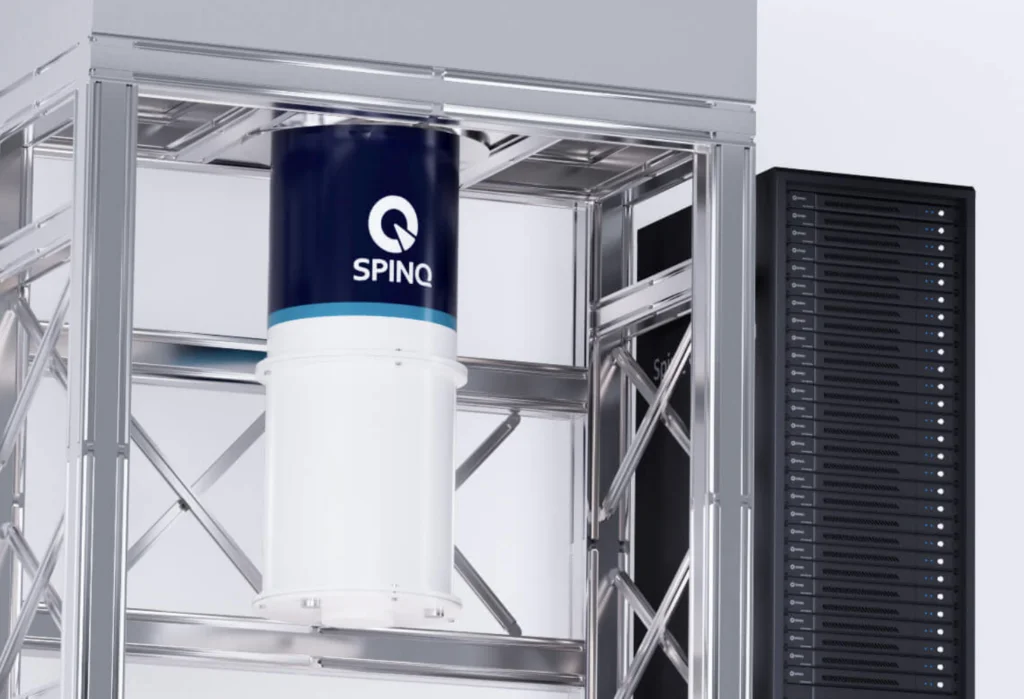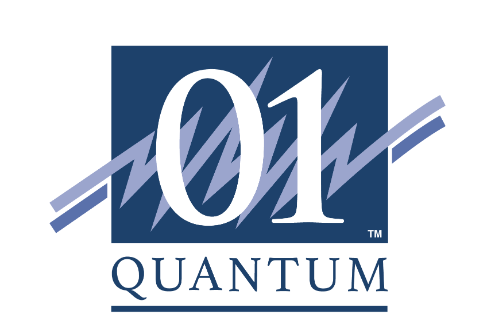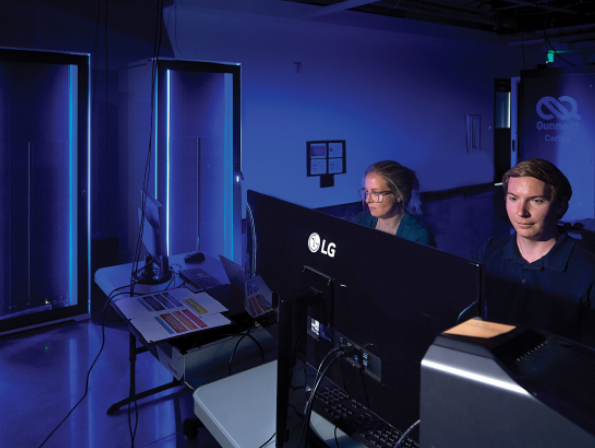Insider Brief
- A new study explores the use of hybrid quantum algorithms, specifically the Quantum Approximate Optimization Algorithm (QAOA) and Quantum-enhanced Markov Chain Monte Carlo (QMCMC), to improve the efficiency and accuracy of weather forecasting and climate modeling.
- QAOA is used to optimize the initial state for weather models, while QMCMC accelerates the sampling process, addressing computational challenges in high-dimensional, nonlinear systems.
- The study highlights that these quantum algorithms could reduce the computational cost and time required for complex weather predictions, although the practical application is limited by current quantum hardware capabilities.
Using classical algorithms backed by today’s computational power and improved meteorological models has led to unprecedented accuracy in weather forecasting. However, as the recent hurricane-generated flooding in the U.S. has shown, predicting slight variations in complex, extreme weather systems is difficult and computationally expensive, which can often lead to catastrophic outcomes. Finding ways to combine those dependable classical approaches with new ideas in quantum algorithm development might one day provide more accurate weather modeling — and that could lead to faster warnings and more lives saved.
A recent study on the pre-print server arXiv explores that idea by investigating the application of Quantum Approximate Optimization Algorithm (QAOA) and Quantum-enhanced Markov Chain Monte Carlo (QMCMC) within the framework of Four-Dimensional Variational Data Assimilation (4DVAR), a key tool in numerical weather prediction (NWP).
The study, published by Abhiram Sripat, of Florence Quantum Labs, highlights how these quantum algorithms can address computational challenges in high-dimensional and nonlinear systems, potentially leading to faster and more accurate predictions.

Classical Challenges in Weather Prediction
According to the study, weather prediction and other climate-related forecasts rely heavily on 4DVAR, which optimizes a model’s initial state based on observed and predicted data. This method improves predictions by combining observations — like weather data — with a model of how the system behaves over time. The “four-dimensional” part refers to including not just the three dimensions of space, but also time, so it looks at how things change over a period.
The goal of 4DVAR, then, is to minimize discrepancies between the model’s state and the data collected over a certain time period. This is done by solving an optimization problem that becomes increasingly complex with higher data resolution and longer time scales.
Traditional methods for solving such optimization problems and sampling from probability distributions used in these predictions, though, are computationally expensive, particularly when the models are large and nonlinear. The challenge grows as higher accuracy demands are placed on these systems. Existing methods often struggle with these high-dimensional problems, as they require significant computational resources and time to provide accurate results.
The Role of Quantum Algorithms
Quantum algorithms, like QAOA and QMCMC, offer potential solutions to these computational bottlenecks. QAOA, a quantum algorithm designed to solve combinatorial optimization problems, can be adapted to find approximate solutions for the 4DVAR optimization problem. The core idea behind QAOA is to encode the cost function — which measures how far a given solution is from the desired outcome — in this case, the 4DVAR cost function, into a quantum system, using quantum operators to manipulate the system and reach a near-optimal solution.
QAOA uses a sequence of quantum gates to find the solution that minimizes the cost function. The parameters for these gates are optimized to find the best configuration. Once the quantum system reaches a state that approximates the optimal solution, it can be sampled to provide an initial estimate for the weather or climate model.
QMCMC, on the other hand, enhances traditional Markov Chain Monte Carlo methods, which are widely used for sampling in Bayesian inference. Classical MCMC algorithms suffer from inefficiency in high-dimensional spaces and when dealing with highly correlated variables. QMCMC leverages quantum features like superposition and amplitude amplification to speed up the sampling process, reducing the number of rejected samples and improving convergence.
Application of Hybrid Algorithms in Weather Forecasting
The combination of QAOA and QMCMC can be applied to improve the data assimilation process in weather prediction. Data assimilation involves merging observational data with model predictions to produce a more accurate forecast. In the study, the hybrid approach integrates QAOA and QMCMC within the 4DVAR framework. QAOA is used to generate a near-optimal initial state for the model, which QMCMC then refines by sampling from the posterior distribution of the system. This hybrid process allows for more efficient optimization and faster, more accurate sampling, potentially leading to better predictions in high-dimensional and nonlinear systems such as weather and climate models.
For example, after QAOA determines a near-optimal initial state, QMCMC can propose new samples from a quantum proposal distribution, which explores the solution space more efficiently. Quantum circuits encode this distribution, allowing for faster and more accurate sampling. The Metropolis-Hastings algorithm, commonly used in classical MCMC methods, is modified with quantum amplitude amplification, further improving the acceptance rates of samples and speeding up the process.
By incorporating these quantum algorithms, the study proposes that weather models can benefit from more accurate and faster updates, which is crucial for real-time weather predictions. This is especially important in scenarios where computational resources are limited, and high accuracy is needed, such as predicting extreme weather events or space weather phenomena.
Benefits of Quantum-Enhanced Particle Filters
The study also integrates insights from particle filters, which are used in nonlinear and non-Gaussian state estimation. By combining QAOA and QMCMC with particle filters, the hybrid approach can address the limitations of classical particle filters, such as particle degeneracy, where many particles carry negligible weight, reducing their effectiveness in accurately representing the system. Quantum-enhanced resampling methods can help maintain the diversity of particles, improving the accuracy and reducing the number of particles required for effective data assimilation.
Additionally, quantum algorithms like QMCMC provide faster sampling and convergence, reducing the computational cost of particle weighting and resampling. This leads to better predictions without the need for an exponential increase in computational resources as the system grows in complexity. The study suggests that these quantum-enhanced techniques could improve the performance of weather prediction models by providing more accurate estimates with fewer computational resources.
Future Applications and Challenges
The hybrid approach presented in this study has the potential to advance weather forecasting, climate modeling and other prediction-based fields that rely on high-resolution models. However, there are still challenges to be addressed before these quantum algorithms can be implemented on a large scale. Quantum hardware is still in the early stages of development, and current quantum computers, known as Noisy Intermediate-Scale Quantum (NISQ) devices, face limitations such as noise and decoherence.
Simulations of quantum algorithms on classical hardware are currently being used to refine these techniques before they can be implemented on actual quantum devices. Quantum simulators can emulate smaller versions of QAOA and QMCMC, allowing researchers to test their performance on controlled problems before scaling up to larger systems.
As quantum hardware improves and quantum-classical hybrid techniques become more standardized, these methods could one day provide significant advantages for real-world applications in weather prediction and beyond.
The paper is technical, so for a deeper look into the research, it is recommended that you read the paper. ArXiv is a pre-print server, which means the work hasn’t been officially peer reviewed.


















